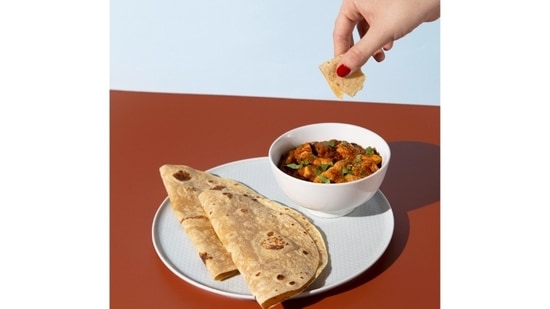
Roti unhealthy in diabetes? Health experts reveal whether sugar patients should skip Indian bread and turn to millets
8 months ago | 81 Views
The Internet is now hosts varied fitness enthusiasts on different social media platforms where from WhatsApp university to Instagram, an app which was originally designed for photo sharing, have evolved into a significant source of information on various topics, including health. However, this accessibility also presents challenges, particularly concerning the accuracy and reliability of the information shared as the dichotomy of health information and misinformation on these platforms can result in a valuable resource or a potential hazard for public health.
Roti vs. Millets Debate Among Diabetics:
In the age of influencers making complex health topics more digestible and engaging, a viral debate has risen - is roti safe for diabetics and should they turn to millets? In an interview with HT Lifestyle, Riya Desai, Senior Dietitian at Wockhardt Hospitals in Mumbai's Mira Road, shared, “Millets such as jowar (sorghum), Finger Millet (Ragi) and bajra (pearl millet) are considered a boon for diabetes patients due to their low glycemic index and high fiber content. These grains tend to help regulate blood sugar levels, satiate the person and manage cravings.”
She cautioned, “Opting for refined rains will spike insulin levels. However, millets break down slowly in the body, releasing energy steadily and avoiding glucose fluctuation. These millets are rich in essential vitamins, minerals, and antioxidants that are known to combat oxidative stress that is high in diabetics. These millets are also packed with magnesium, which plays a vital role in blood sugar regulation. If you have diabetes and struggling to maintain your blood sugar levels then add these millets to your daily diet and you will be able to control your blood sugar levels. These millets are essential for the body and should be taken without fail.”
Diabetic Diet Dilemma:
Bringing his expertise to the same, Dr Subrata Das, HOD - Internal Medicine and Diabetology at Sakra World Hospital in Bengaluru, said, “Humans have digestive enzymes like protease to process proteins, but it can't fully break down gluten. Most people can tolerate undigested gluten, but for some, it triggers severe autoimmune responses, known as celiac disease, which damages the small intestine. Others without celiac disease may experience symptoms like bloating, diarrhea, headaches, or skin rashes after consuming gluten, likely due to fermenting carbohydrates called FODMAPs (Fermentable Oligosaccharides, Disaccharides, Monosaccharides, and Polyols), rather than gluten itself.”
For centuries, humans have consumed gluten-containing foods, which provide protein, soluble fiber and nutrients. Dr Subrata Das opined, “Gluten from whole grains is not harmful to healthy individuals who can tolerate it. However, wheat is often refined into processed foods like snack crackers and potato chips, losing its nutritional value. Those on gluten-free diets who still eat processed foods may continue to experience health issues like weight gain and blood sugar swings. The real problem lies in the sodium, sugar, and additives in these processed foods, not the gluten itself.”
He warned, “Those who have wheat allergy, coeliac disease, gluten intolerance, or gluten ataxia may experience negative effects from eating gluten. As an all-natural gluten-free substitute, millets work well in a range of recipes, such as breads, porridges, drinks, and flatbreads. There are two types of millet: small (minor) and giant (major). Millet is one of the oldest grains that can be grown and has been a staple food throughout Southeast Asia and Africa for thousands of years.”
Safe Dietary Choices:
Highlighting that millets are emerging as a nutritional powerhouse, offering an array of health benefits that surpass many other cereals, Dr Subrata Das revealed, “Packed with essential amino acids, rich in calcium, and high in protein, millets stand out for their comprehensive nutrient profile. They are abundant in crucial nutrients such as iron, niacin, phosphorus, potassium, antioxidants, and vitamins A and B. Their low glycaemic index (GI) makes them particularly effective in preventing type II diabetes by helping to regulate blood sugar levels. Additionally, the non-starchy polysaccharides and high fiber content in millets enhance their nutritional value, promoting overall health and well-being.”
He added, “Since millets have high soluble fiber content, they can cut cholesterol and the risk of atherosclerosis and heart disease. Important minerals including calcium, zinc, and iron are also abundant in millets. Millets contain antioxidants such as ellagic acid, curcumin, and quercetin that support detoxification and may act as prebiotics to boost the benefits of probiotics. Millets are high in niacin, which is vital for skin and organ health. Darker varieties contain beta-carotene that converts to vitamin A, boosting the immune system and fighting free radicals. Tannins, phytates, and phenols in millets protect cells from damage. Their high fiber content supports gut health and lowers colon cancer risk. Finger millet is rich in B vitamins, important for brain function and cell division, with folate essential for producing red blood cells.”
Dr Subrata Das concluded with the suggestion that to maximise nutrient absorption, soak millets in water for several hours before cooking. This reduces phytic acid content, which can otherwise inhibit nutrient absorption.
Read Also: Two periods in one month: 7 ways to deal with it
#




















